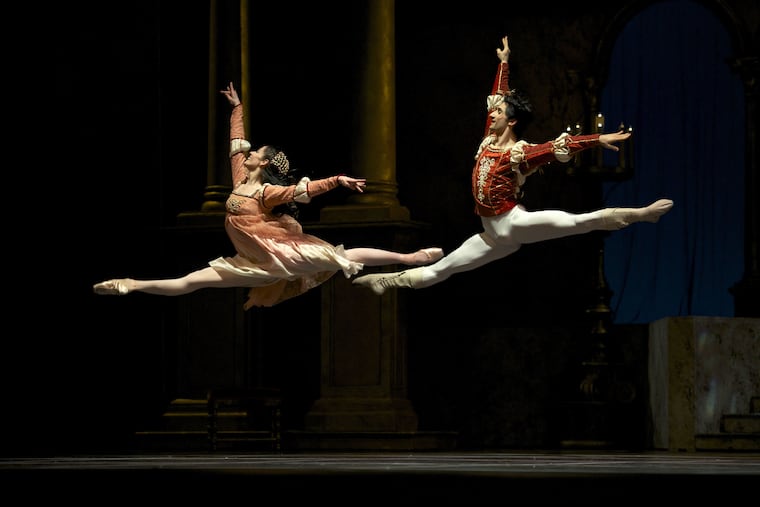Davit Karapetyan is the new director of the School of Philadelphia Ballet
Karapetyan, who is from Armenia, was a principal dancer with San Francisco Ballet for a decade. He more recently co-director the Pennsylvania Ballet Academy with his wife, Vanessa Zahorian.

Just in the last six months, dance education in Philadelphia has gotten a major overhaul. In February, Peter Stark took over the directorship of the Rock School for Dance Education.
And on Aug. 22, Davit Karapetyan begins as the director of the School of Philadelphia Ballet.
Karapetyan, 41, who was a principal dancer with San Francisco Ballet for more than a decade, was most recently co-director the Pennsylvania Ballet Academy in Camp Hill, Cumberland County, with his wife, Vanessa Zahorian, also a former principal dancer with San Francisco Ballet.
Karapetyan replaces James Payne, who ran the school for four years.
“We are very excited for the opportunity to have one of the greatest dancers that there was,” said Angel Corella, artistic director of Philadelphia Ballet. “Not only was he a wonderful dancer, but he’s also a wonderful teacher. He has taught the company a few times, and the company has fallen in love with him from day one.
“The great thing about Davit is that he’s so methodical and so clean. He was such a precise dancer and noble, noble dancer, and he knows exactly how to translate that for his teaching.”
Karapetyan was chosen out of about 30 candidates, Corella said. He grew up in Yerevan, Armenia, in a family of dancers and in a country where ballet is adored as much as it is in Russia.
“It was all about dance in our house, and I was the only one that wasn’t that excited about dance,” Karapetyan said.
But when he was 12, his parents convinced him to at least try folkloric Armenian dance at the Armenian School of Ballet, his country’s major school, which teaches all forms of dance. After about six months in the program, he met some of the ballet dancers, and soon he wanted to switch to the ballet program. His parents were surprised but supportive.
And suddenly, he was all in.
“Obviously, I was five years behind all the other students, but that drive that I had, the passion that I had, it made me catch up with them quite fast.”
So fast, in fact, that rather than graduate with his class (as is common in Vagonova-style schools), Karapetyan, by age 16, was ready to move on. He loved the pure classical technique — it’s still what he prefers — but he wanted to explore other styles as well. So he applied for scholarship programs throughout Europe and wound up at the Schweizerische Ballettberufsschule in Zurich, Switzerland. When he graduated, he landed a job at the Zurich Ballet.
But after six years of dancing classical ballet, he wanted a more varied repertory. Without a job, he moved to the United States and began exploring various companies. San Francisco Ballet hired him as a principal dancer.
Both he and Zahorian retired from San Francisco Ballet in 2017. Then they moved back to Pennsylvania, where Zahorian grew up, and took on the directorship of the Pennsylvania Ballet Academy.
“Since we’ve moved to East Coast five years ago, I’ve been coming and watching performances with Philadelphia Ballet,” Karapetyan said, “and trying to get to know the East Coast, the companies, and schools. I wanted to keep my connections and go teach classes in the companies ... and Philadelphia was one of them.”
Karapetyan and Corella say they have a similar aesthetic, which starts with pure classical technique but also includes Balanchine and other styles that students will need to get jobs.
They’re both also interested in growing the school. Corella said this is dependent on the company’s building, which opened a decade ago but has never been finished. There are currently four studios, Corella said, but the company uses three of them full time. The plan has long been for four more studios, and eventually a large program that will be the main training program for the company.
“We literally don’t have any more space,” Corella said.